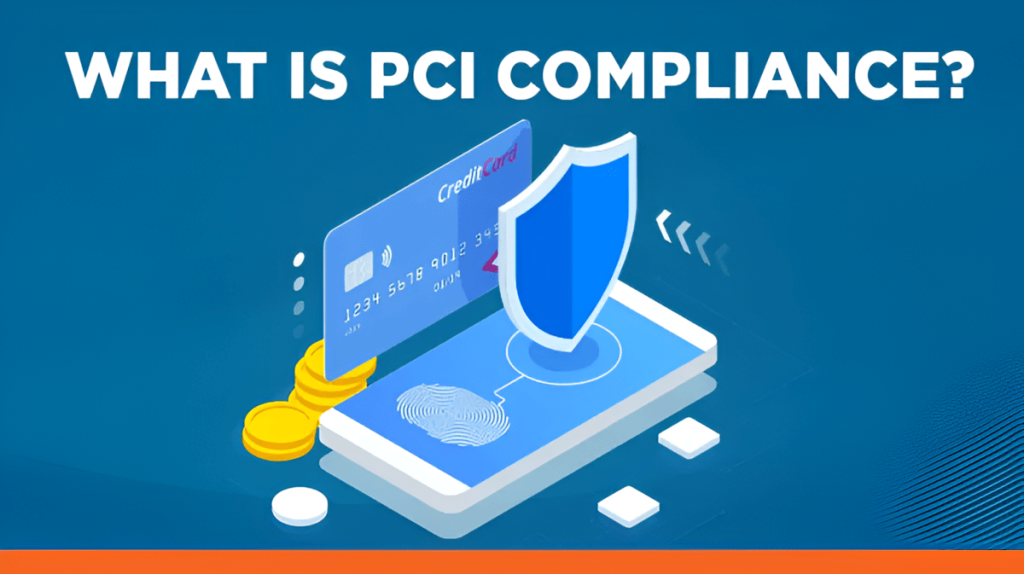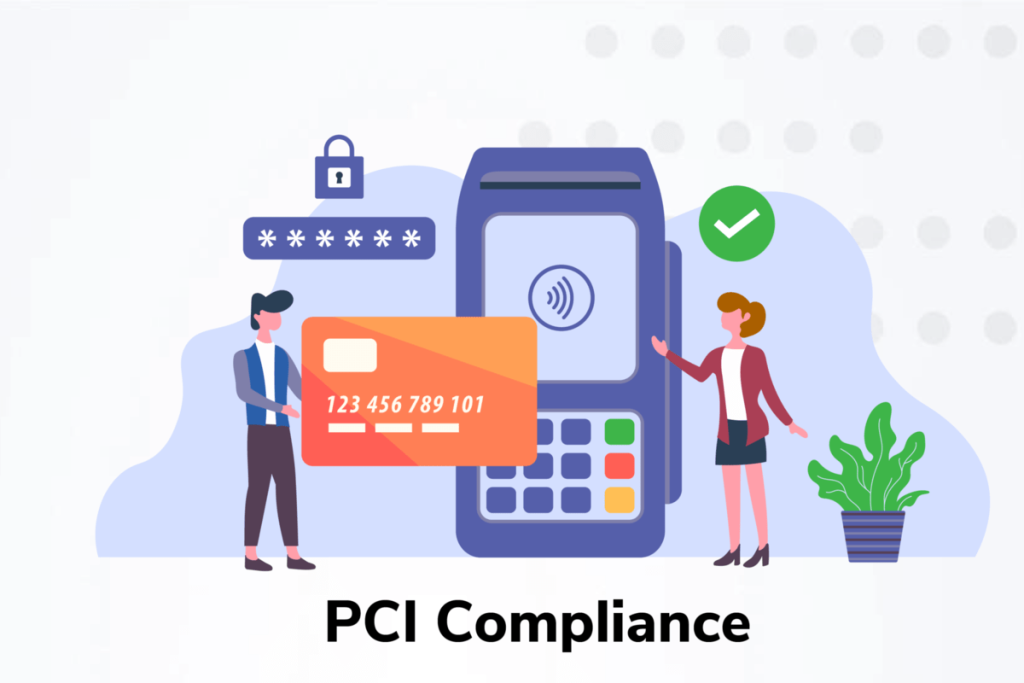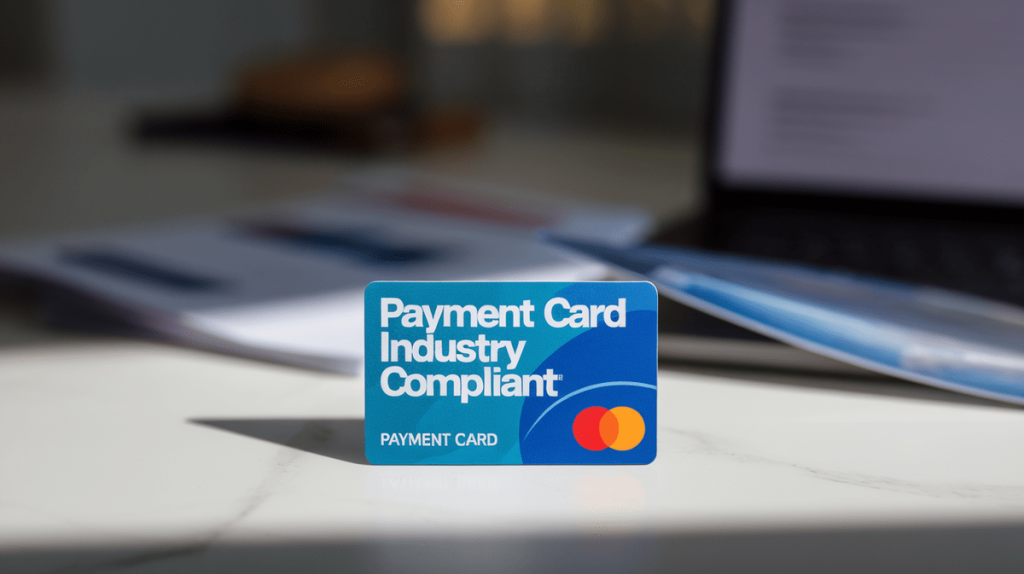The Ultimate Guide to PCI Compliance: Essential Information for Your Business
Introduction
PCI Compliance is mandatory for businesses handling credit card transactions. The Payment Card Industry Data Security Standard (PCI DSS) was established to protect cardholder data and ensure secure transactions. This guide explains PCI compliance, its importance, the steps to achieve it, and the challenges businesses face in maintaining it.
What is PCI Compliance?
PCI compliance refers to a set of security standards designed to protect credit card information. The PCI Security Standards Council (PCI SSC), created by major card brands like Visa and Mastercard, developed these standards to enhance payment security.
PCI DSS is the core standard that applies to any organization that stores, processes, or transmits cardholder data. Compliance is ongoing, requiring businesses to adhere to 12 specific requirements.
Importance of PCI Compliance
- Data Breaches: The 2023 Data Breach Investigations Report by Verizon showed that 60% of breaches involved payment card data. Non-compliance increases the risk of breaches, leading to fines and loss of customer trust.
- Fines and Penalties: Non-compliant businesses can face fines from $5,000 to $100,000 per month until compliance is achieved.
- Customer Trust: PCI compliance signals to customers that their data is secure, building trust and loyalty.
The 12 Core Requirements of PCI Compliance
To achieve PCI compliance, businesses must adhere to the following 12 requirements:
- Install and Maintain a Firewall Configuration: Protect cardholder data with strong firewall protections.
- Do Not Use Vendor-Supplied Defaults for System Passwords: Ensure all systems are securely configured.
- Protect Stored Cardholder Data: Encrypt stored cardholder data to prevent unauthorized access.
- Encrypt Transmission of Cardholder Data Across Open Networks: Use strong encryption to protect data in transit.
- Use and Regularly Update Anti-Virus Software: Protect systems from malware.
- Develop and Maintain Secure Systems and Applications: Regularly update and patch systems.
- Restrict Access to Cardholder Data by Business Need-to-Know: Limit data access to necessary personnel.
- Assign a Unique ID to Each Person with Computer Access: Ensure individual accountability.
- Restrict Physical Access to Cardholder Data: Secure physical access to sensitive data.
- Track and Monitor All Access to Network Resources and Cardholder Data: Maintain logs of access.
- Regularly Test Security Systems and Processes: Conduct frequent security tests.
- Maintain a Policy That Addresses Information Security: Develop and enforce a comprehensive security policy.

PCI Compliance Levels
Businesses are categorized into four PCI compliance levels based on the volume of credit card transactions processed annually.
Table 1: PCI Compliance Levels
| Level | Criteria | Validation Requirements |
|---|---|---|
| Level 1 | Over 6 million transactions annually, or companies with prior data breaches | Annual on-site assessment by a QSA and quarterly network scans. |
| Level 2 | 1-6 million transactions annually | Annual Self-Assessment Questionnaire (SAQ) and quarterly network scans. |
| Level 3 | 20,000 – 1 million e-commerce transactions annually | Annual SAQ and quarterly network scans. |
| Level 4 | Fewer than 20,000 e-commerce transactions, or up to 1 million card-present transactions | Annual SAQ and quarterly network scans, if required by the acquirer. |
Steps to Achieve and Maintain PCI Compliance
1. Assessment
- Identify and Inventory Cardholder Data: Determine where sensitive data is stored, processed, or transmitted.
- Analyze IT Assets: Identify all systems that process payments and assess them for vulnerabilities.
2. Remediation
- Fix Vulnerabilities: Address security weaknesses identified during the assessment.
- Implement Controls: Ensure that all PCI DSS requirements are met and that security controls are in place.
3. Reporting
- Documentation: Prepare a report of compliance, including the Self-Assessment Questionnaire (SAQ) or Report on Compliance (RoC).
- Submit Reports: Provide the necessary documentation to your acquiring bank or payment processor.
Merchanto.org, a recognized partner of Visa and Mastercard, offers solutions in chargeback prevention. Their expertise can enhance your PCI compliance efforts. For more information, visit Merchanto.org.
4. Regular Testing and Monitoring
- Security Testing: Conduct regular penetration testing and vulnerability scans to ensure that security controls are effective.
- Monitoring: Continuously monitor access logs and systems for signs of suspicious activity.
Table 2: Regular PCI Testing Requirements
| Test Type | Frequency | Purpose |
|---|---|---|
| Penetration Testing | Annually or after significant changes | Identify potential security weaknesses |
| Vulnerability Scans | Quarterly | Detect known vulnerabilities in network and systems |
| Log Review | Daily | Monitor and detect unauthorized access attempts |
Challenges of PCI Compliance
Complexity and Costs
- Implementation: PCI DSS encompasses over 400 controls across 12 requirements. Implementing these can be challenging for small and medium-sized businesses.
- Cost: The average cost of PCI compliance ranges from $15,000 to $25,000 annually for small businesses, and higher for larger enterprises.
- Ongoing Effort: PCI compliance requires continuous monitoring, testing, and updating of security measures.
Evolving Threat Landscape
- Emerging Threats: As cyber threats evolve, businesses must adapt their security strategies to address new vulnerabilities.
- Regulatory Changes: The PCI SSC regularly updates its standards, requiring businesses to stay informed and adjust their compliance efforts.

Benefits of PCI Compliance
Enhanced Security
- Reduction in Data Breaches: PCI-compliant businesses are 50% less likely to suffer a data breach, according to a report by Verizon.
- Customer Trust: Compliance with PCI DSS enhances customer trust by showing a commitment to protecting their data.
Financial Savings
- Avoidance of Fines: Non-compliance can result in fines ranging from $5,000 to $100,000 per month. Maintaining compliance can save businesses from these penalties.
- Lower Fraud Rates: PCI compliance helps prevent fraud, saving businesses from financial losses associated with chargebacks and fraudulent transactions.
Common Misconceptions
PCI Compliance Equals Security
- Reality: While PCI compliance improves security, it does not guarantee complete protection. Businesses must continue to evolve their security practices.
One-Time Compliance
- Reality: PCI compliance is ongoing and requires regular testing, monitoring, and updating of security measures.
Conclusion
PCI Compliance is essential for businesses handling credit card transactions. Adhering to the 12 core requirements, understanding the challenges, and leveraging the benefits will protect sensitive data, maintain customer trust, and avoid penalties.
Table 3: PCI Compliance vs. Non-Compliance
| Aspect | PCI Compliant | Non-PCI Compliant |
|---|---|---|
| Data Breach Risk | Lower | Higher |
| Customer Trust | Higher | Lower |
| Fines and Penalties | Avoided | $5,000 – $100,000/month |
| Fraud Prevention | Enhanced | Weak |
| Regulatory Compliance | Meets industry standards | Potential legal and financial repercussions |
Prioritizing PCI compliance safeguards your business, protects customers, and builds a secure foundation for growth.



